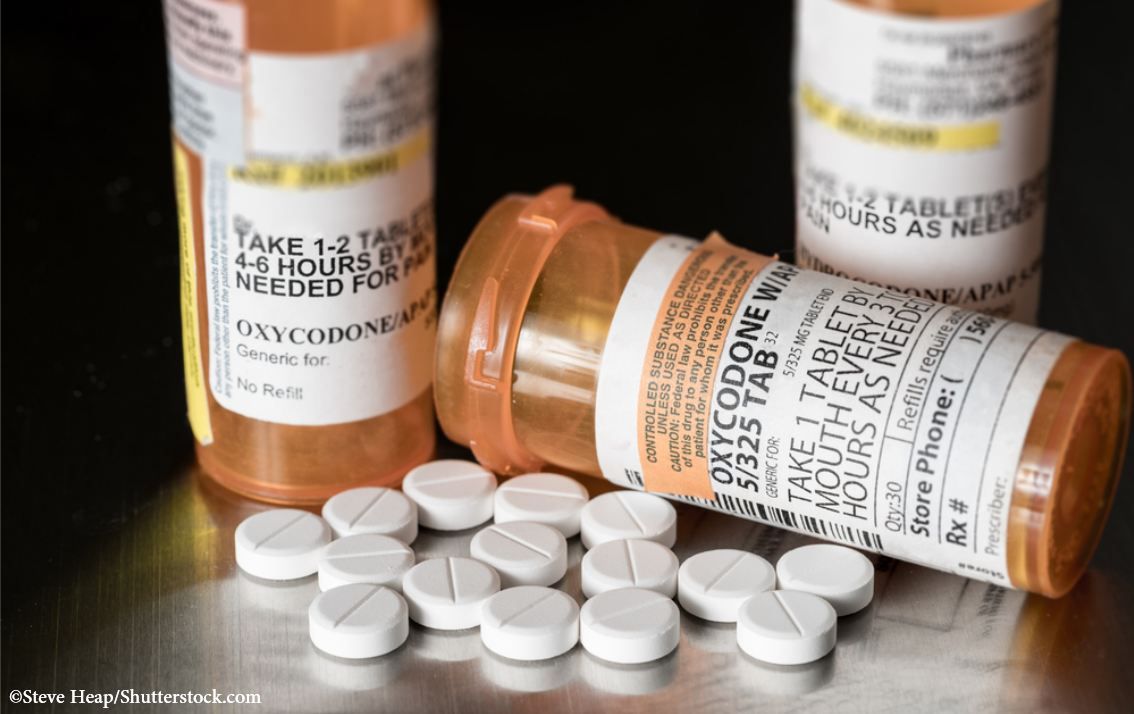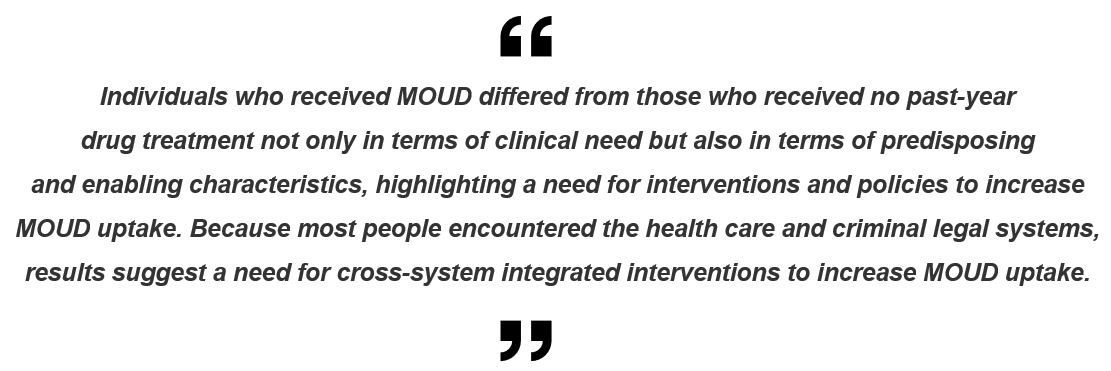- Clinical Technology
- Adult Immunization
- Hepatology
- Pediatric Immunization
- Screening
- Psychiatry
- Allergy
- Women's Health
- Cardiology
- Pediatrics
- Dermatology
- Endocrinology
- Pain Management
- Gastroenterology
- Infectious Disease
- Obesity Medicine
- Rheumatology
- Nephrology
- Neurology
- Pulmonology
Medication for Opioid Use Disorder Not Prescribed for Majority of Americans in Need
A new study of more than 2 million US adults and adolescents who could benefit from medication for OUD reveals only 1 in 4 reported past-year use.

A new cross-sectional study of more than 2 million individuals who could have benefited from opioid use disorder (OUD) treatment found that only 1 in 4 of (27.8%) had used medication for opioid use disorder (MOUD) in the past year.
Disturbingly the authors also report that no adolescents aged 12 to 17 received MOUD and that only 13.2% of adults aged ≥50 years received the treatment.
The study, published online March 23 in JAMA Network Open, found MOUD significantly underused despite a high prevalence of contact during the year before the study with both health care and the criminal legal system.
“Medication for OUD is associated with reductions in opioid use and disorder, longer treatment retention, and substantially reduced opioid-related mortality,” wrote study authors, led by Pia M. Mauro, PhD, assistant professor of epidemiology, Columbia University Mailman School of Public Health, New York. “Despite the strong evidence base, access to MOUD is limited by low facility and clinician uptake and persistent stigma surrounding OUD and medication.”
Research isn't representative
As background for the study Mauro and colleagues cite the lack of nationally representative studies of MOUD use in the US. They underscore that current knowledge of MOUD use is limited to convenience or clinical samples, which may differ systematically from people in the general population with need for OUD treatment. This study is the first of its kind, they wrote.
The investigators used data from the 2019 National Survey on Drug Use and Health. For inclusion, adult and adolescent respondents were identified as individuals who would benefit from MOUD, ie, if they met criteria for past-year OUD, reported past-year MOUD use or received past-year specialty treatment for opioid use in the last or current treatment episode.
To calculate descriptive statistics for the past year OUD treatment need the investigators used survey weights to derive nationally representative estimates and the proportion within each subgroup reporting past-year MOUD, non-MOUD services, or no treatment. They also examined past-year contacts with the health care and criminal legal systems.
RESULTS
The final weighted study sample numbered 2 206 169 individuals who may have needed OUD treatment. Of those, half (55.5%) were men, 74.6% were non-Hispanic white, 9.9% were non-Hispanic Black, 8.0% were Hispanic, and 7.5% identified as non-Hispanic other. Slightly more than half (55.1%) were aged ≥35 years.
The authors report that 53.7% had public insurance and 52.2% lived in large metropolitan areas. Using weighted percentages, they found that 56.8% of people had received past-year prescription OUD and 80% of all individuals had ≥1 co-occurring substance use disorders.
In 2019, according to Mauro and colleagues, only 27.8% of participants who needed MOUD received it. More than half (57%) of participants received no treatment during the year and just 15.3% received non-MOUD services (eg, they were connected with treatment but not prescribed medication). No adolescents aged 12-17 years and only 13.2% of adults aged ≥50 years reported using MOUD.
The authors note the historic poor likelihood of adolescents receiving MOUD may be explained in part by the “substantial stigma around medication use.” Most adolescents in the study (88%), according to the findings, did not receive non-drug intervention either, underscoring a significant unmet need in this vulnerable population.
Past-year contact with the health care system (85%) and criminal legal system (60.5%) was common among participants, according to Mauro and colleagues. However, only 29.5% of participants with past-year health care contact and 39.1% of those with past-year criminal legal system contact reported receiving MOUD.
Regarding the association of insurance coverage with treatment status, coverage was identified as the main enabling resource, according to the authors. More than one-third of those with public insurance (35.2%) reported receiving MOUD compared with 21.0% with private coverage and 16.8% with no public or private insurance.
Their findings represent an important initial step towards understanding the correlates of MOUD use in the general US population, said Mauro and colleagues in their conclusions, and they reveal critical gaps in treatment engagement and MOUD use. The barriers to evidence-based care must be addressed, they state.

Reference: Mauro PM, Gutkind S, Annunziato EM, et al. Use of medication for opioid use disorder among US adolescents and adults with need for opioid treatment, 2019. JAMA Netw Open. 2022;5(3):e223821.
